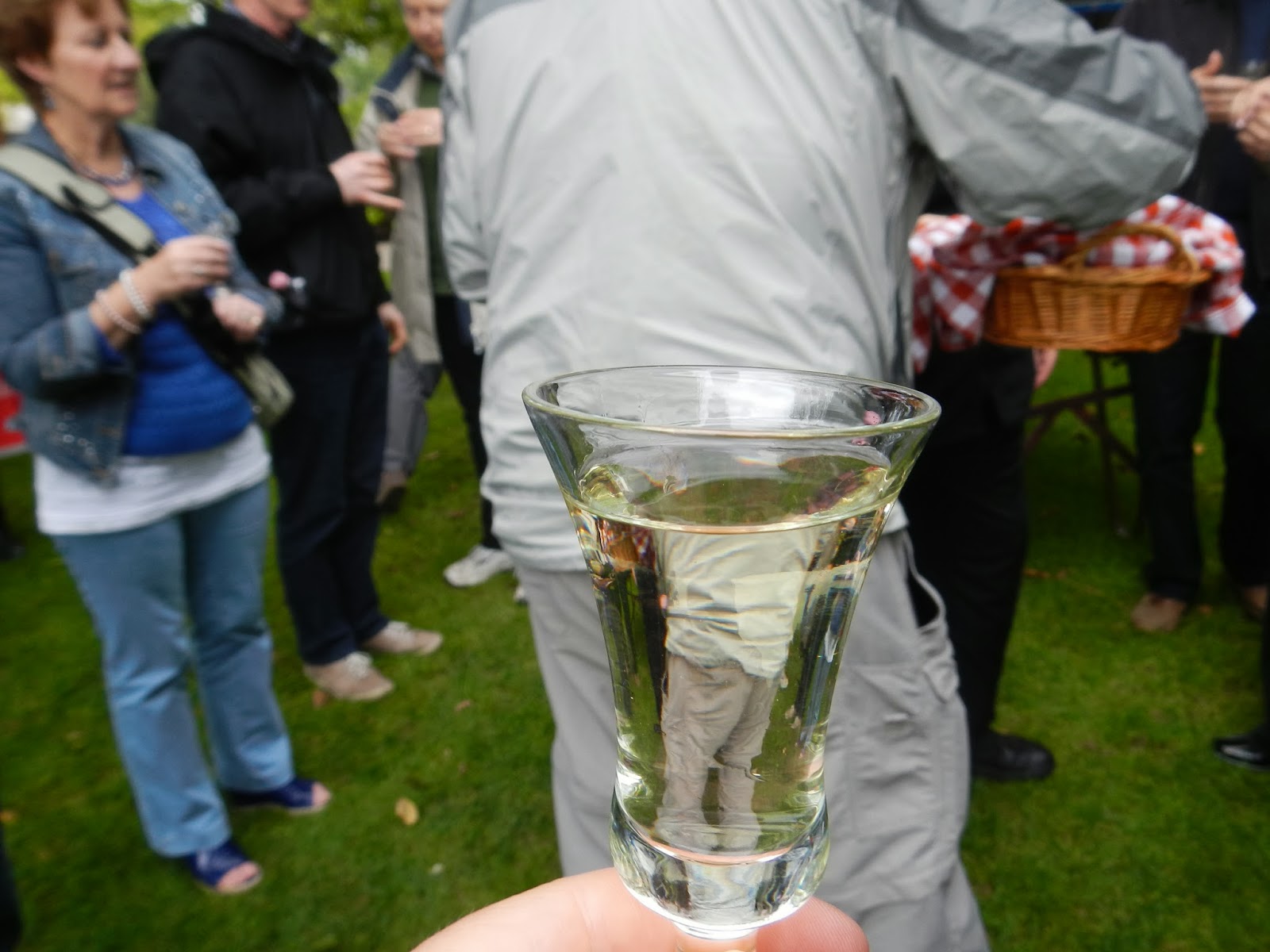 |
| The Bulgarian Countryside |
I have to say that Hungary, Romania and Bulgaria were places I never gave much thought to visiting until this trip. None of the three are really tourist destinations, which probably means that they’re great places to visit, right?
The countrysides of Romania and Bulgaria are very pretty. Lots and lots of trees, sunflower and corn fields, cows and sheep. Lots and lots of sheep. No. Really. Lots and lots of sheep. Most of the farms we passed looked well-kept
 |
| See? Sheep! |
Every tour guide we had in Hungary, Romania, or Bulgaria had very disparaging remarks to make about the contributions of the Soviets to the built culture in their area. I suppose that if you like buildings with personality, color, or interesting forms then Soviet architecture is something of an eyesore. However, if you appreciate grey cement and utilitarian forms then Soviet architecture is still something of an eyesore. Soviet buildings are great lurking hulks and often occur in large blocks as if the builders thought that if one concrete monstrosity was good, fifty ought to be better. According to Magdi (our Hungarian guide), the buildings were terrible places to live, with non-functioning heating, unreliable water and sewer systems and undependable electricity. Sounds like a worker’s paradise to me!
Why do I mention this? Well, as we rolled through the countryside, the pastoral scenery would occasionally be interrupted by cement grotesqueries. Factories, especially, remain standing, although most look like they hadn’t been in use since the day the Wall fell. Many times, we spotted what must’ve been guard towers, a chilling sight indeed. Were they prisons? Factory security? We never found out. The crumbling remains of the Soviet Empire
 |
| His Office |
 |
| Her Office |
Our first stop for the day was in Veliko Tarnovo. We visited a traditional Bulgarian house first. It would have been a farmhouse that housed a fairly large family, and had all the comforts a house in the 17th century could have. A well, a special room for the man of the house to conduct business, a special room for the lady of the house to do her work (we call it the kitchen), a room set aside for the women to visit and weave and sew. The piece de resistance was the special room set aside for new mothers and their infants. It actually looked really nice. I probably wouldn’t have left.
 |
| Rob met a four-legged friend |
After the house visit, we rode into town and visited a statue to the heroes of the Bulgarian people. Even though the statue predates the Soviets, it has all the hallmarks of Soviet heroic art: Enormousness, ugliness and grand heroic poses for the figures. After that, we visited an absolutely beautiful 500 year old Orthodox chapel with many of the original frescoes and icons still intact. Even though I’m not terribly religious (or religious at all, for that matter), it’s hard not be moved by the obvious love that was invested in the paintings and icons. Unless you’re Elizabeth. She declared as we were leaving the church that “At home, we call those comic strips.” Really?
We visited Veliko Tarnovo’s old town and I found a lovely little charm for my collection, made by the gentleman who sold it to me. He kept apologizing for his lack of English, but he still spoke 100% more English than we did Bulgarian.
Our almost final stop for the day was in Kazanlak and the Valley of Roses and Thracian Tombs. Apparently, they grow roses for rose oil to be used in perfumes and cosmetics. No, they don’t grow Thracians for cosmetics, too. The landscape in this part of Bulgaria is dotted with tumuli, or huge man-made burial mounds built for Thracian kings in about 2,500 BC. We toured the one tomb that the Bulgarian government has opened and it was spectacular. They have left the original grave goods in situ (many of them solid gold), which made it easier to imagine what it must have looked like the day the grave was sealed. We visited a shop where they sold rose oil products and Rob got some rose Turkish Delight (Bulgarian Delight?). The final visit for the day was to a breathtakingly beautiful Russian Orthodox church that is the final resting place for 12,000 Bulgarian and Russian soldiers who fought against, who else, the Ottomans at the Battles of Shipka Pass. The day was cloudless and the sky was an incredible shade of blue which only made the golden domes of the church sparkle and glimmer more.
 |
| Orthodox church memorial. |
 |
| Tomb of Thracian King |
 |
| Tumuli: man-made mounds that are tombs |
The train crew had asked us to not go to bed after dinner as we had to present our shining faces at the Turkish border. They estimated that we’d cross the border at about 1130PM, so we all just stayed up in the bar car and tried not to listen to Piano Man. Until Nigel decided to sing along. Loudly. Off key. Off beat. I couldn’t help but think of him as a prototype Rowan Atkinson used for Mr. Bean. It really was that bad. When we reached the border and lined up to have our passports stamped, Nige was at the head of the line, and as he leaned into the border guard’s cage and said loudly and slowly (as if speaking to a deaf imbecile) “THANK YOU. THANK YOU VERY MUCH. THANK YOU VERY, VERY MUCH” I knew my supposition had to have been correct.
Off to bed for us and one more sleepless night on the train.
Tomorrow: Istanbul, not Constantinople.









































